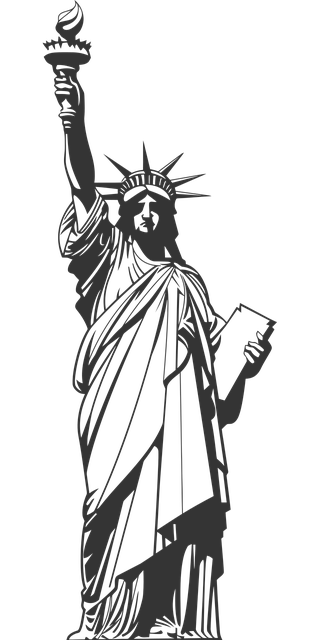The article examines the profound cultural significance and rich symbolism of the American Eagle and the American Flag as enduring emblems of unity and strength within the United States. Both symbols, deeply ingrained in the national consciousness, represent America's commitment to freedom, democracy, and resilience. The American Eagle, depicted with an olive branch for peace and arrows for defense, signifies the country's dual dedication to peaceful coexistence and preparedness, while the 13 stars and stripes on the American Flag honor both the original colonies and the current states, symbolizing unity across time. These national icons are omnipresent in public life, from government buildings to sports arenas, and serve as daily affirmations of shared identity and pride for Americans. In digital spaces too, they are a visual language for expressing solidarity and celebrating collective values. The essay concludes that the American Eagle and Flag transcend mere ornamentation; they are vital cultural touchstones that articulate the nation's heritage, aspirations, and the complex narrative of a united yet diverse country.
The spirit of American unity and strength is encapsulated in two of the nation’s most enduring symbols: the American Eagle and the American Flag. This article delves into the rich tapestry of their iconography, tracing their historical significance and the profound symbolism they carry. From their origins to their contemporary manifestations, these emblems continue to represent the collective aspirations and the resilient spirit of a nation. Join us as we explore the American Eagle and Flag, and their enduring role in uniting the diverse threads of American society under one banner.
- The Iconography of Unity: The American Eagle and Flag as National Emblems
- Historical Significance: The Evolution of the American Eagle and Flag in Representing Strength and Unity
- Symbolism in Detail: Understanding the Meanings Behind the American Eagle and American Flag
- Modern Manifestations: The Continued Relevance of the American Eagle and Flag in Contemporary Society
The Iconography of Unity: The American Eagle and Flag as National Emblems

The Iconography of Unity in America is deeply rooted in its national emblems, the American Eagle and the American Flag, both of which symbolize the country’s unity and strength. The American Eagle, with its regal bearing and sharp eyesight, represents the vigilance and freedom that are central to American ideals. Its majestic flight across the nation’s coat of arms is a visual metaphor for the soaring aspirations of the American people. As a national symbol, the eagle embodies the country’s resilience and its ability to rise above challenges, reflecting the indomitable spirit that has defined the United States throughout its history.
Complementing the Eagle, the American Flag serves as a powerful unifier, its red and white stripes symbolizing the original 13 colonies, while the blue field in the upper left corner hosts 50 stars, one for each state in the Union. The flag is a testament to the collective identity that binds Americans together, transcending regional differences, cultural backgrounds, and ideologies. It is a daily reminder of national pride, patriotism, and the shared heritage that unites diverse communities across the country. Both the American Eagle and the American Flag are icons that evoke a sense of unity and strength, standing as enduring symbols of a nation forged by diversity and bound together by common values.
Historical Significance: The Evolution of the American Eagle and Flag in Representing Strength and Unity

The American Eagle and Flag are enduring symbols that have come to represent the unity and strength of the United States. Historically, the eagle has appeared in various forms since the nation’s founding, with its earliest iterations on official seals during the Great Seal Act of 1782. Over the years, the design of the eagle evolved, culminating in its current depiction holding a olive branch and arrows in one talon, and a representation of freedom in the other, symbolizing peace and warfare, respectivly. This emblematic bird encapsulates the nation’s dual nature as a peaceful entity that is also prepared for conflict to defend its values. Similarly, the American Flag has undergone significant transformations since the first “Stars and Stripes” was adopted in 1777. The flag has seen changes in the number of stars and stripes, each addition reflecting new states joining the union, a testament to America’s commitment to inclusivity and unity. Each star and stripe adds a layer of history, reinforcing the narrative of a nation forged from diverse backgrounds yet united under a common banner. The combination of the American Eagle and Flag serves as a powerful visual reminder of the country’s resilience and cohesion through its historical evolution, and stands as a beacon of freedom and democracy across the globe.
Symbolism in Detail: Understanding the Meanings Behind the American Eagle and American Flag

The American Eagle and the American Flag stand as enduring symbols of unity and strength in the United States, each embodying profound significance within the national consciousness. The American Eagle, depicted with its wings spread and a fiercely gripped olive branch in one talon and arrows in the other, represents the country’s readiness to defend liberty both at home and abroad. Its majestic form signifies freedom, independence, and the soaring potential of the American spirit. The eagle’s gaze is directed towards the future, symbolizing foresight and resilience. Intricately designed with 13 stars above its head, reminiscent of the original 13 colonies, the eagle unites the past, present, and future in a visual testament to national cohesion.
Accompanying the eagle is the American Flag, a vibrant patchwork of red, white, and blue that has flown over every significant moment in U.S. history. Each color carries its own symbolism: red for hardiness and valor, white for purity and innocence, and blue for vigilance, perseverance, and justice. The flag’s stripes represent the original 13 colonies, with the stars on the blue field signifying the current states of the Union. The flag’s design is a constant reminder of the diversity of American society harmoniously united under its principles. Both the American Eagle and the American Flag serve as powerful visual reminders of the nation’s heritage, values, and aspirations, fostering a collective identity that transcends individual differences.
Modern Manifestations: The Continued Relevance of the American Eagle and Flag in Contemporary Society

The American Eagle and Flag remain potent symbols of unity and strength in contemporary society, manifesting in various forms that resonate with Americans across diverse contexts. The iconic imagery of the eagle, embodying the nation’s spirit of freedom and resilience, is frequently seen in public spaces, from government buildings to sports arenas, serving as a daily reminder of national pride and identity. In the digital age, these symbols have transitioned seamlessly onto social media platforms, where they are often used as expressions of American values and solidarity during national events or collective celebrations. The American Flag, with its thirteen stripes and fifty stars, continues to be a rallying point for Americans, regardless of their backgrounds or beliefs. It adorns homes, businesses, and public venues, and is a central feature in patriotic displays on national holidays like the Fourth of July and Memorial Day. The enduring presence of these symbols underscores their relevance as cultural touchstones that unite people in shared purpose and collective memory, transcending the boundaries of time and geography to symbolize the American ethos. The American Eagle, with its majestic and independent nature, is also a recurring motif in artistic expressions, fashion, and even as logos for American businesses, further cementing its place as an emblem that captures the essence of the nation’s character. Together, the American Eagle and Flag are more than mere emblems; they represent a collective identity, a shared history, and the ongoing narrative of a nation striving for unity in its diversity.
